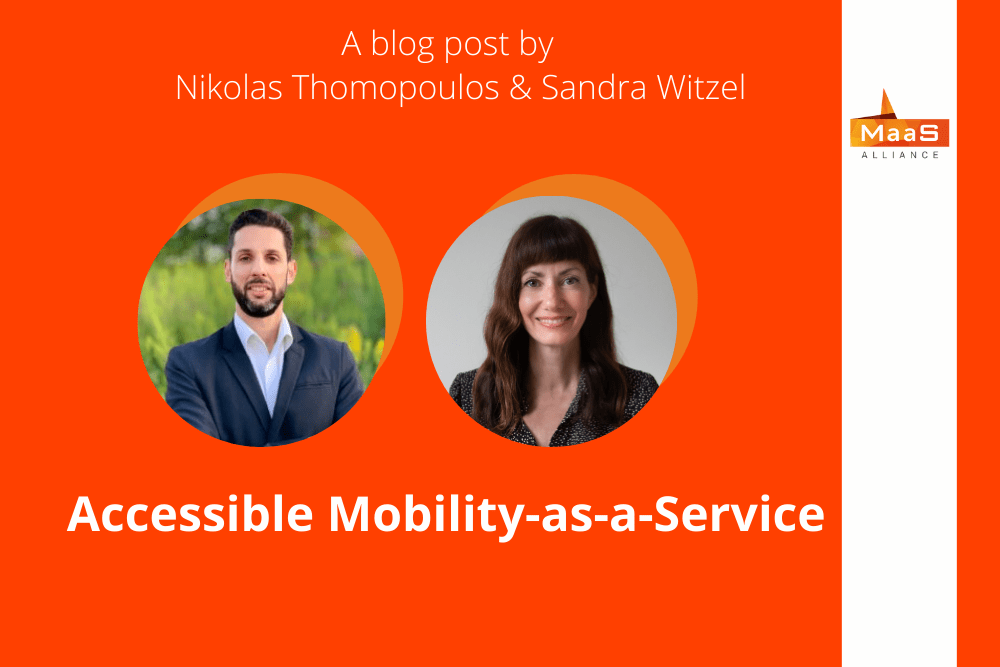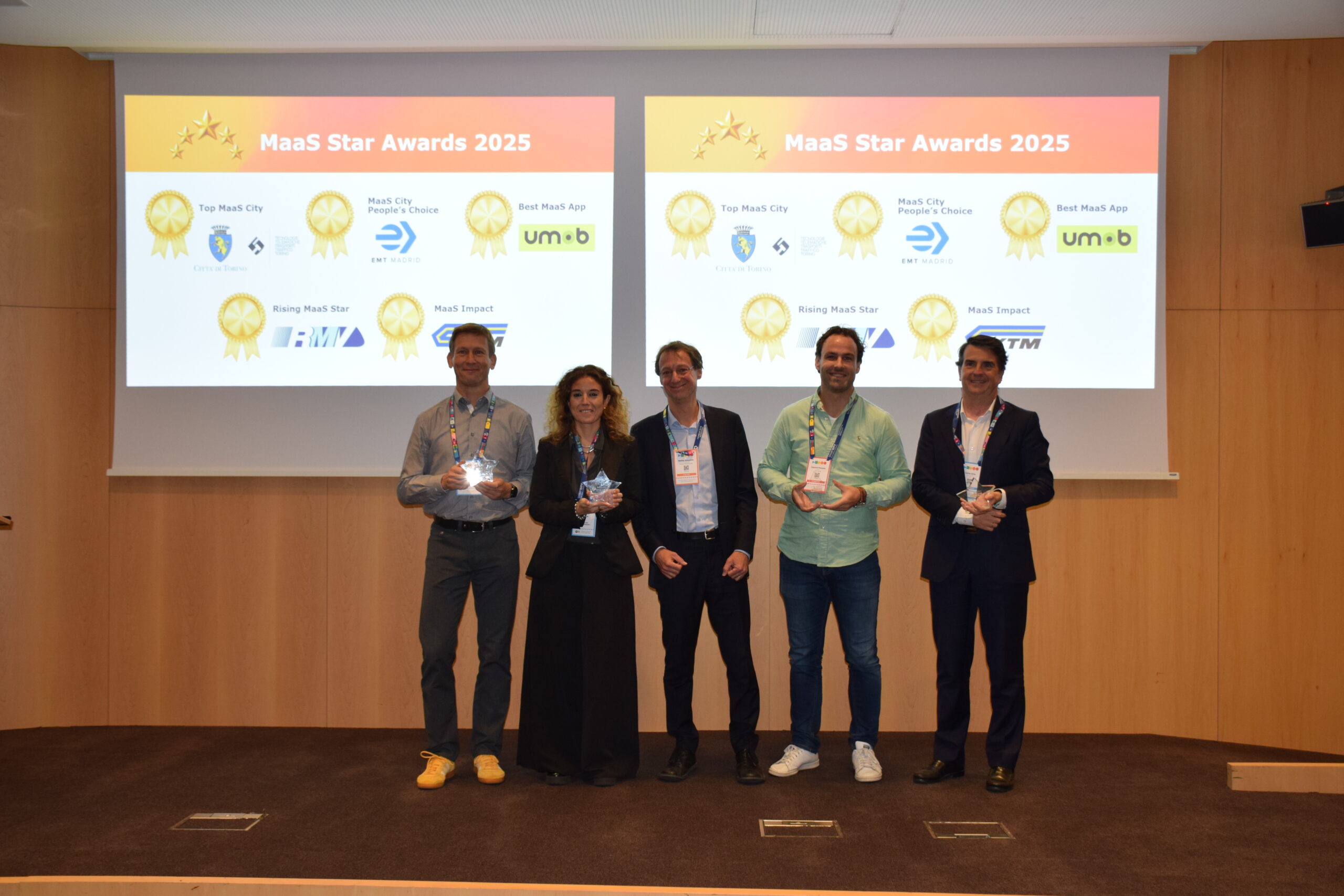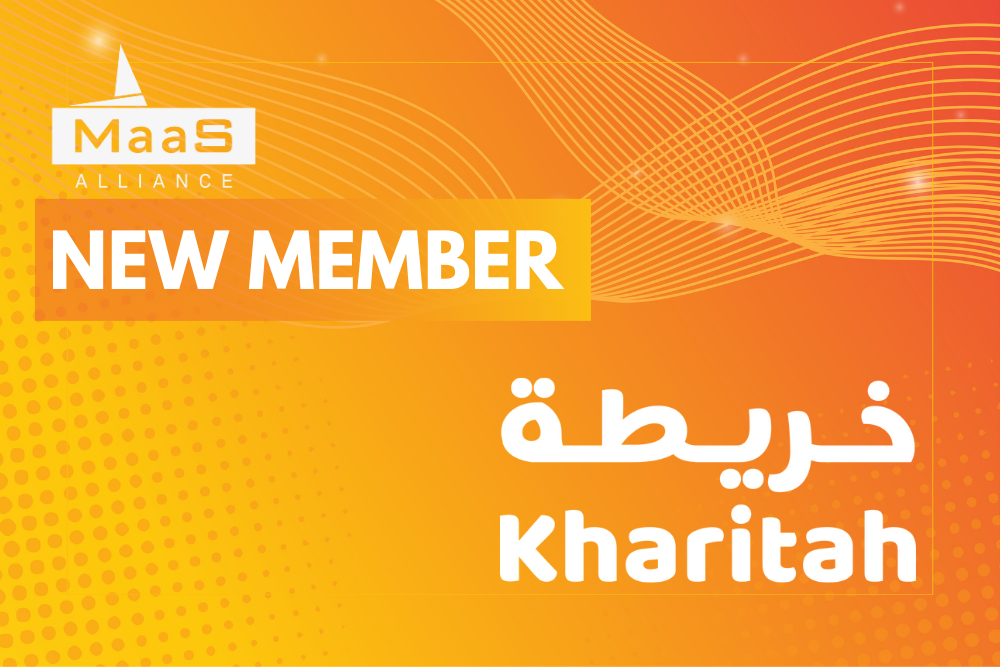
Transport planning over the past 50 years has offered some ground-breaking innovations often linked with ICT (Information and Communications Technology) advancements but has also exacerbated the exclusion of certain users from these innovations increasing the so-called ‘digital divide’ with an undesirable and even negative impact on their accessibility and overall transport sustainability. As Dr Karel Martens (2017) argued, we need “a new paradigm for transport planning based on principles of justice”. This blog post aims to offer relevant information and recommendations to practitioners about making MaaS more accessible, and ultimately sustainable, through a principle- and needs-based approach.
Multimodal transport offered through MaaS features as a solution to a number of current sustainability challenges, given the climate emergency declared by authorities worldwide. However, the user perspective should not be neglected as has been highlighted by the relevant MaaS Alliance Users &Rules Working Group and also in the academic literature, for example in a Special Issue about Autonomous and Connected Transport. According to the World Bank, around 15% of the global population, namely 1 billion people, have a disability which also influences their daily mobility and in turn their accessibility. Thus, stakeholders need to beware of the relevant limitations identified by researchers who conducted a similar analysis about AVs based on a large European survey, namely about comfort, convenience, storage capacity and more importantly: trip-chaining (Towards inclusive transport landscapes). Willingness to share a ride varies significantly among socio-economic groups, as well as between commuting and leisure journeys (All work and no play?), which is aligned with a recent survey of transport managers across Belgium aiming at rethinking car commuting to evaluate MaaS in a BSB context. Not taking these needs and concerns into account at this early development, which have been reported in the literature (Insights about Gender Differences among Seven Countries), the stage would be a missed opportunity to improve accessibility for both MaaS providers and city authorities.
Unsurprisingly, pricing and affordability of MaaS are also major factors affecting accessibility as highlighted by FIA too. But how can a fair and transparent pricing system be first tested and then introduced for MaaS? The latter is an ever-challenging concern, particularly when considering users not only of diverse income levels but also located in diverse geographic areas with diverse infrastructure levels e.g. urban or rural. Mobility credits or mobility budgets have started to be tested in Australia (e.g. Skedgo), the UK (Coventry, Solent Transport FTZ) and the US (Pittsburgh). Yet, it is still unclear how such budgets should be allocated to support MaaS deployment whilst meeting user needs, particularly those of low-income groups. Research projects, e.g. Surrey or the Solent Transport FTZ suggested the development of relevant incentives, but have not managed to test their suggestions at sufficient scale yet due to the COVID-19 pandemic. Incentives should be aligned with sustainable mobility goals to make a wider contribution towards inclusive ageing goals.
In general, a range of factors is often taken into account when designing accessible and inclusive mobility services, such as gender, age, disability as highlighted by the WISE-ACT WG2 report on social challenges. SkedGo have already developed and tested MaaS solutions with various accessible settings and features. One notable trial was an Australian pilot focussing on crowdedness routing to benefit people on the autistic spectrum. Other settings allow for wheelchair-friendly routing, and recently improved screen-reader abilities support people with visual impairments. Similarly, the Uber Wheelchair Accessible Vehicles have received positive uptake, addressing the needs of relevant user groups. It is important to stress that accessible MaaS should target both visible and non-visible disabilities, particularly since symbiotic benefits are distributed across all user groups.
Overall, the goal should be improved accessibility through improved mobility services to offer an equitable distribution of benefits across user groups. This also includes empowering underrepresented groups of the MaaS eco-system through increased employment opportunities. But which types of equity should be the focus when trying to improve universal accessibility? Researchers have provided an overview of relevant equity types and principles so that MaaS stakeholders in each city or area can co-design their local MaaS offer based on specific ethical principles and equity types which will simultaneously serve sustainability and accessibility. As recently highlighted at the ITS World Congress 2021, mobility providers should avoid regulatory gaps and align their services with existing legislation (e.g. Americans with Disabilities Act – ADA).
A practical recommendation is to test across cities a relevant indicator that will be based on existing research (e.g. SUMINI: Sustainable Urban Mobility Inequality Indicator; Capabilities Approach) and will foster inclusive accessibility. Such indicators are a valuable tool in the COVID-19 aftermath, particularly given the anticipated resurrection of the travel and tourism industry which we can already get a glimpse of in 2021. Looking into the future, it is crucial for cities to facilitate communications with stakeholders of MaaS eco-systems and deploy research-informed solutions to test both their technological feasibility and their user uptake. Such approaches will ensure that universal rights such as inclusive mobility will be well served through accessible MaaS.
Regardless of where you are based or what is your specific MaaS interest, the key take-away message is that sustainable transport is also accessible transport and that is what makes the difference.
If you would like to engage more with this topic, you can follow up MaaS Alliance activities or join WISE-ACT lunch-time webinars. Read here about how AVs can serve the mobility needs of users with disabilities.
Written by Nikolas Thomopoulos and Sandra Witzel.
Nikolas Thomopoulos is a Senior Lecturer in Transport at the University of Surrey and the Chair of WISE-ACT, which is an international network of 200 experts in 42 countries focusing on the Wider Impacts and Scenario Evaluation of Autonomous and Connected Transport. In collaboration with WISE-ACT colleagues, he has coordinated a survey in more than 20 countries and organised citizen engagement events focusing on user preferences, including accessibility and equity. He has also contributed to a range of collaborative publications e.g. books, reports, special issues, journal articles and is currently working on the Surrey MaaS with local authorities and MaaS Alliance members.
Sandra Witzel has almost two decades of marketing experience, with a major focus on technology-based, disruptive and fast-growing businesses. She has previously worked for start-ups, SMEs, corporates and agencies. As CMO and board director for SkedGo, a Mobility-as-a-Service tech enabler, and their pro-active partnership with the MaaS Alliance, she is the workstream leader for ‘User-Centric MaaS’ for the Alliance. Sandra regularly speaks at major transport-tech events around the world. Within the MaaS ecosystem, Sandra is particularly interested in making transport more accessible and inclusive. She is also co-founder of the Women in Mobility UK group.



